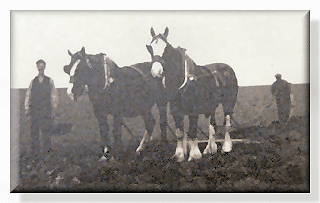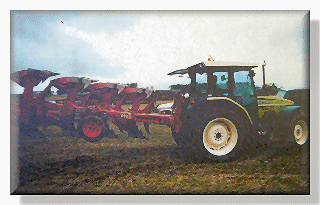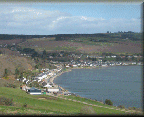
Before Clydesdales were available, garrons or oxen pulled the plough.
By the end of the 18th century some of the go-ahead farmers near Avoch had discarded the old wooden Scots plough and had begun to use the more efficient light plough, which had its essential parts made of iron.
In the Highlands up to that time, ploughing involved a team of 4 garrons yoked side by side, and at least three men. One man held the handles (stilts), the driver walked backwards in front of the the garrons, striking them to urge them on, while the third man followed with a spade to upturn any divots the plough had missed.
Stoppages on rough stony ground were frequent and only about half an acre per day was ploughed.

Small light chain plough – invented in 1763. This plough, along with the reaper, were Scottish inventions.


